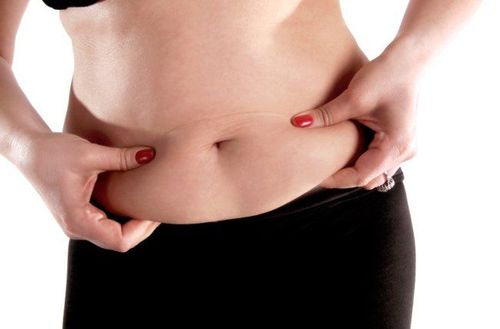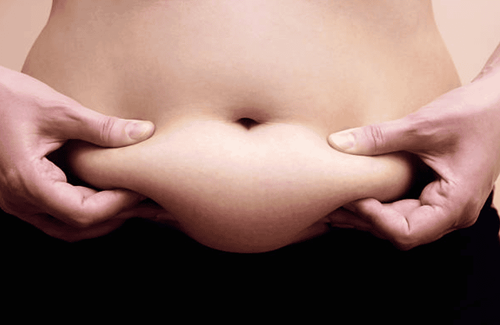This is an automatically translated article.
People often think belly fat or body fat is the reason why you don't have a beautiful and harmful body that we have to work hard to get rid of. But to scientists, fat has more functions than we thought, including a link to brain health.
1. Brown fat
Scientists have discovered that brown fat is not a worthless fat and is getting more and more attention. Currently, brown fat is thought to resemble muscle more than white fat. When activated, brown fat burns white fat. Recent studies show that lean people tend to produce more brown fat than overweight or obese people when stimulated to burn calories. This finding opens up hope for a potential obesity treatment. But how to increase a person's brown fat or stimulate existing brown fat is still being studied.
Children have more brown fat than adults to help keep warm. Brown fat stores in adults gradually decrease, but become more active during the cold months. From there, the idea of sleeping in colder rooms to burn off a few extra calories was born. Not only do lean adults have more brown fat than overweight people, but even their brown fat cells are far more dominant than white fat cells. A person weighing 68 kg can have 9 - 13 kg of fat, which includes 1 - 1.3 kg of brown fat. But if maximally stimulated, just 0.9 kg of brown fat can also burn an additional 300 - 500 calories per day - enough to lose up to 0.45 kg in a week.
Experts are still working on a drug that increases brown fat. But it should be noted that brown fat stimulants are not a cure for all weight problems. However, they can help you lose weight more effectively if combined with a reasonable diet and exercise.
2. White fat
White fat is much more abundant than brown. White fat's job is to store energy and produce hormones, which are then secreted into the bloodstream. Small fat cells produce the hormone adiponectin, which makes the liver and muscles sensitive to the hormone insulin, thereby reducing the risk of diabetes and heart disease. In overweight and obese people, the production of adiponectin is slowed or stopped working, making them more susceptible to disease.

Hình ảnh tế bào mỡ trắng và mỡ nâu
3. Subcutaneous fat
This is the fat found directly under the skin, measured by the size of skin folds to estimate your total body fat. In terms of overall health, subcutaneous fat on the thighs and buttocks may not be so bad, even with some potential benefits. Thigh and buttock fat doesn't cause as many problems as other types of fat, especially visceral fat. However, the subcutaneous fat cells in the abdomen are a different story. There is a lot of evidence that the danger of a "big belly" lies not only in the visceral fat layer, but also in the subcutaneous belly fat layer.
4. Visceral fat
Visceral fat is the fat that wraps around the internal organs and causes health problems, such as increasing the risk of diabetes, heart disease, stroke and even dementia. If you have a large waist or belly, of course you already have visceral fat. Visceral fat contributes more to insulin resistance, increasing the risk of diabetes more than other fats. While it's not clear why, visceral fat is certainly a health risk.
An expert studied the link between visceral fat and dementia by evaluating the records of more than 6,500 people, for an average of 36 years, from when they were 40 until they were 70. Profiles include details of height, weight, and waist measurement - reflecting visceral fat. People with the largest busts have a higher risk of dementia than those with smaller waists. This association holds true even for people with excess belly fat but overall normal weight.
Although it is not known why belly fat and dementia are linked, experts speculate that substances like leptin, a hormone secreted by belly fat, may have some adverse effects to the brain. Leptin not only plays a role in appetite regulation, but is also involved in learning and memory.
5. Belly fat
Belly fat is considered an unhealthy fat because it includes both visceral and subcutaneous fat. CT scans can help determine if belly fat is subcutaneous or visceral, but it's not cost-effective. If you have an oversized belly, determining the percentage of visceral or subcutaneous fat is not as important as recognizing that a large belly is not good for health. Women's waist circumference > 88 cm and men > 101 cm resulted in a higher risk of the disease.
Mỡ bụng có thể dẫn đến nguy cơ mắc bệnh cao hơn người bình thường
According to experts, belly fat is considered a greater health risk than thigh or hip fat. Belly fat has an adverse effect on insulin resistance, which increases the risk of diabetes, as well as a worse effect on blood lipids, increasing the risk of heart disease and stroke.
MORE: Effective belly fat loss diet
6. Thigh fat, butt fat
While men tend to accumulate fat in the abdomen, women often have a "pear body", meaning fat accumulation in the thighs and buttocks. New evidence shows that pear-shaped women are less likely to develop metabolic disease than those with large bellies.
Around the problem of subcutaneous fat storage, experts say that thigh and buttock fat can be better than belly fat. But the benefits of pear-shaped women stop at menopause, when fat tends to accumulate more in the abdominal area.
7. Weight loss and fat loss
When trying to lose weight, you will evenly remove all types of fat, most of which will reduce white fat. However, if you exercise along with your diet, you'll tend to lose a little more visceral fat from your belly.
In short, there are different types of fat - including brown fat, white fat, subcutaneous fat, visceral fat and belly fat,... with two main purposes. One is to safely store excess calories so that you can mobilize energy when hungry. The second is the release of hormones that control metabolism. Scientists expect to discover much more about all types of fats in the near future.
Please dial HOTLINE for more information or register for an appointment HERE. Download MyVinmec app to make appointments faster and to manage your bookings easily.
Reference source: webmd.com












